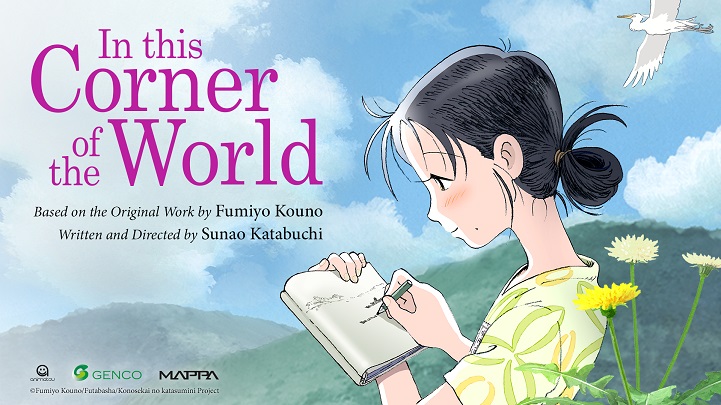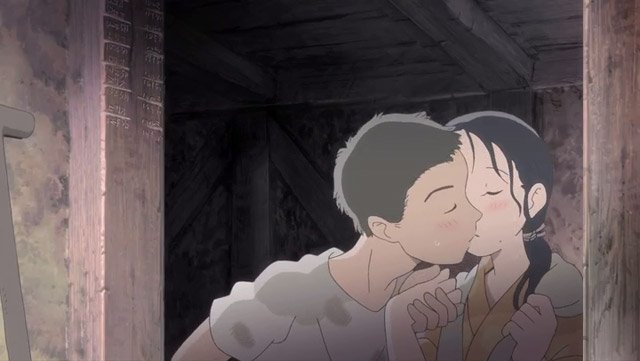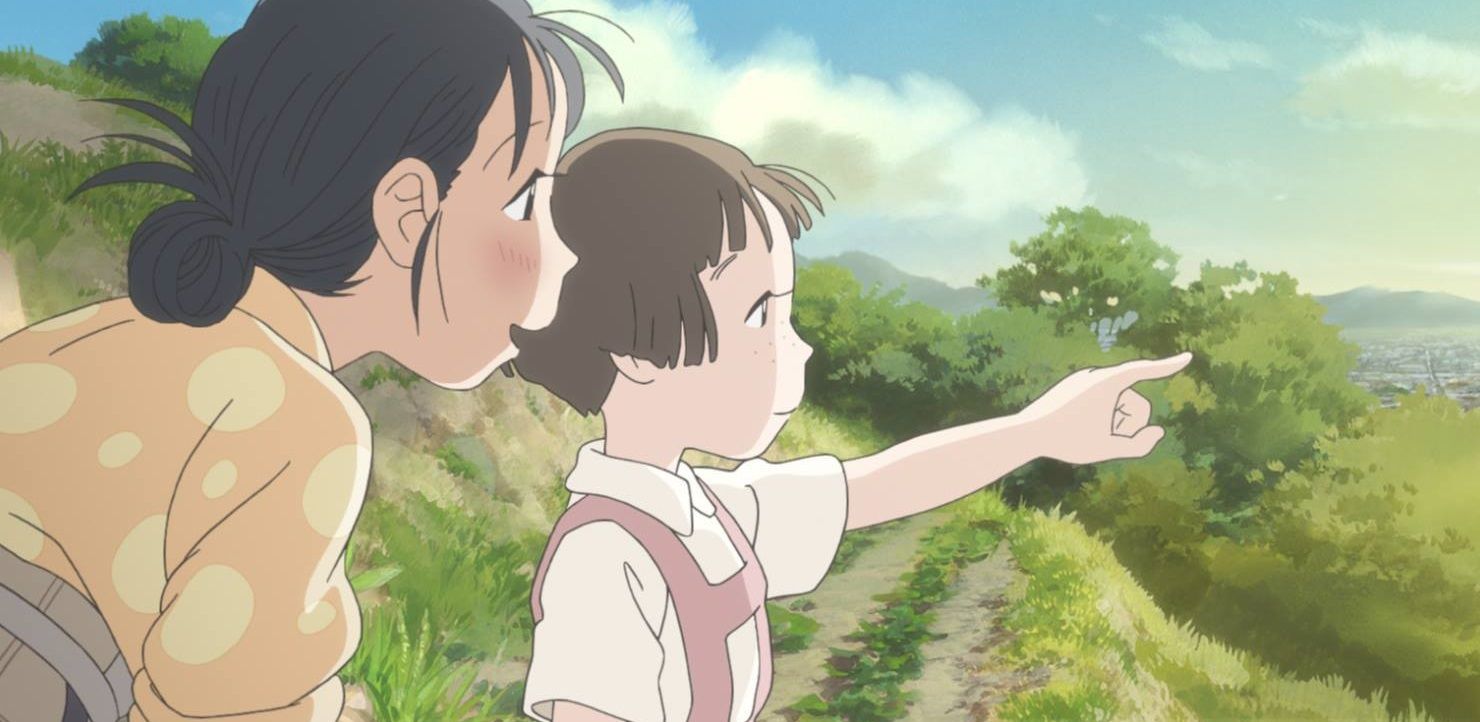review - Kono Sekai no Katasumi ni - In This Corner of the World

Technical sheet :
Other titles こ の 世界 片 隅 隅 隅 (Japanese)
In This Corner of the World (anglais)
Dans un recoin de ce monde (French)
film Format
Genre Romance / Historical / War / Drama / Comedy / Slug
period 2016
Duration: 128 min
Global interest help heart1.gif
Staff Author: Fumiyo Kono
Directed by: Sunao Katabuchi
Screenplay: Sunao Katabuchi
Character design: Hidenori Matsubara
Music: kotringo
Direction of the animation: Hidenori Matsubara

summary :
Suzu Urano lives with his family near Hiroshima and passes a childhood and then a carefree adolescence within his district while Japan begins its conquests in the years 1930. The girl is very head in the air and not particularly smart Besides a certain facility to draw that remains his hobby.
Arriving in marriageable age, she let herself be carried by events and eventually married Shûzuku Hojo in 1944, following an arranged marriage. She settles with her beautiful family in Kure, one of the main military ports in Japan, where the great ships of the Imperial fleet parade.
From there, Suzu strives to integrate into his new environment as the consequences of the war are felt more and more in everyday life. If Suzu gets along well with her mother-in-law, the situation is more tense with her sister-in-law who has come back to live with her parents with her daughter.

Comment :
The original story is a manga of Fumiyo Kouno that Sunao Kataboshi has managed to transpose wonderfully into animation. The design style, both sleek and tinged with details in the sets, does not seem to fit the screen at first, but the adjustment is finally made naturally by maintaining this balance. The film embellishes the story with first a successful soundtrack but also a staged work and a pastel rendering for the moments of reverie of Suzu which sometimes overpasses the imaginary to the real.
The feature film takes up the documentary aspect of the manga which not only describes the daily experience of the Japanese of those regions at that time but also the recipes of cooking and the tricks to save everything and survive at best in this period of deprivation. Shown as a simple and rather stuffy as a child, Suzu proves very resourceful in this field, although it continues to get lost regularly and to blunder repeatedly.
His giddiness provokes comical situations within a family where each character contributes. Life is not rosy and there are tensions but the narrative avoids unnecessary melodies and makes us follow the daily life of a Japanese home during the Second World War. Fumiyo Kouno succeeds in making his readers laugh, and it is likewise the spectators for the film which takes up the same sketches: Conflicts are at first far and the consequences remain indirect for a long time, which leaves a large place to the lightness and the Tone offset. Suzu seems to find his happiness and enjoy the moment. The men of the family work at the arsenal and have not gone to the front unlike many neighbors.
The war, however, comes back as a lead scrape that crushes these moments, with the increasingly frequent incursions of American planes that are targeting Kure and its surroundings. Again, Suzu takes his trouble in patience like everyone else, but the moments become more and more poignant as Japan crumbles. The film resumes the shocking scenes of the manga that remake down on earth a spectator remained until then in a kind of cocoon.
There is no bloody passage and everything is presented very modestly, almost sublimally, but the horror of situations remains in the mind despite the messages of hope.
The manga is in two 200-page volumes and the feature length lasts more than two hours. Yet Sunao Kataboshi did not bring everything to the screen and had to make choices, even if to modify a little the narrative. On the one hand, it's a bit of a shame because we lose Suzu's strong relationship with another secondary character, as well as an important aspect of Suzu's tie with her husband and finally an emotional charge that makes the manga harder than The film, whereas the reverse happens if you compare the animated adaptation of the Tomb of the Fireflies by Isao Takahata which goes beyond the original news written by Akiyuki Nosaka.
On the other hand, this voluntarily "forgotten" pane offers an air call but above all, more time to organize the narrative, add scenes to heal the transitions between the different pictures or to deepen some aspects. Each chapter of the manga is a small story apart, with a fall often humorous. The danger of adaptation is to be imposed this rhythm and this is also the reproach made to many series that literally transpose mangas of short stories into four boxes, the yonkoma, and which result in a product wobbly.
Except maybe the end, where the director unveils a little too before the fall, the film keeps its own rhythm by having made dead ends on several passages of the manga while remaining faithful to him. This is one of the success stories of the adaptation of Dans une noire of this world which proposes a different look that completes the manga, with bonuses a generic of end which proposes scenes unpublished.
I hope you like this post! You can follow me @redanime so you don't miss my future posts.
This movie looks amazing, it sounds like Studio Ghibli made it! To be honest, the anime community should be very interested in Steemit.
I agree with this
yes, For the moment not big world
Very cool! I have been looking around Steemit for people who are interested in anime! I just made a post looking for people interested haha.
Glad to find you! Followed! =) Nice review too, maybe I will watch this anime in the future.
I'm interested in Anime too~
welcome @ahmadmanga
thank you @houseofren
This is an interesting movie... maybe I'll put it in my to-dowload/watch list too~